Labrador training and education

People often have dogs. It is important that the pet is trained or taught the most important rules. If a Labrador is about to appear at home, its owner must clearly understand what kind of dog will live with him, what are its features, and what needs to be done with it. Education and training are very important aspects of working with any dog, but each breed has its own characteristics.
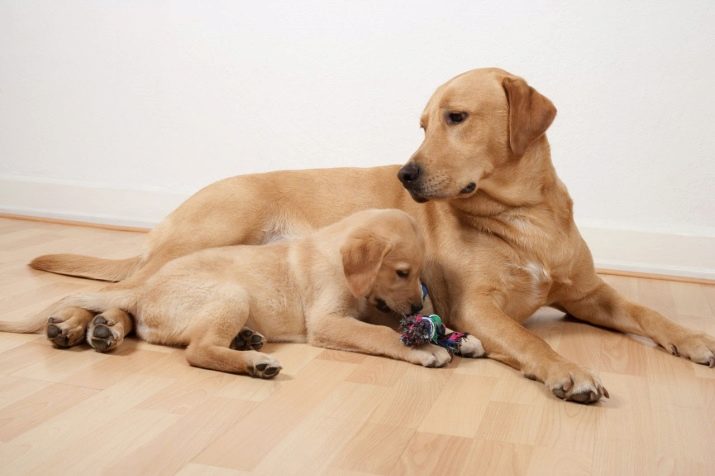
Character traits
The Labrador breed has existed for more than 1000 years, initially these dogs were intended for security purposes, but this task is the hardest for them to cope with. Instead of a guard and protector, I managed to get an excellent friend, companion and assistant in various matters.
So that an adult dog does not cause inconvenience, it must be trained from childhood, and this is not so easy.
Due to the peculiarities of character, training a Labrador is a rather difficult task, since by nature these dogs are very active, emotional and impulsive, therefore it is difficult for them to concentrate on any task for a long time. Despite the problematic parenting, these animals are considered true family dogs. The characteristics of the breed looks like this:
- perky animal;
- with a playful temperament;
- has a great love for children;
- serves faithfully to his master, tries to help in everything;
- loves long walks in the fresh air.


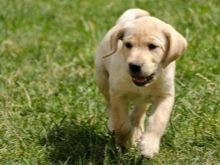
In addition, it is worth pouring out the main advantages of the breed, which help in successful training, these are:
- good learning ability for basic commands;
- have an excellent memory, knowing their master and those close to them;
- being in a cheerful mood in almost any situation;
- love to play any sports games;
- the possibility of teaching dogs to children from the age of eight.
To be able to raise an obedient and good dog, it is necessary to start work as early as possible. As soon as the puppy has grown stronger and began to show character, it is worth getting down to business.
A boy and a girl Labrador can be brought up in the same way, the training that is aimed at some specific goals will be different.
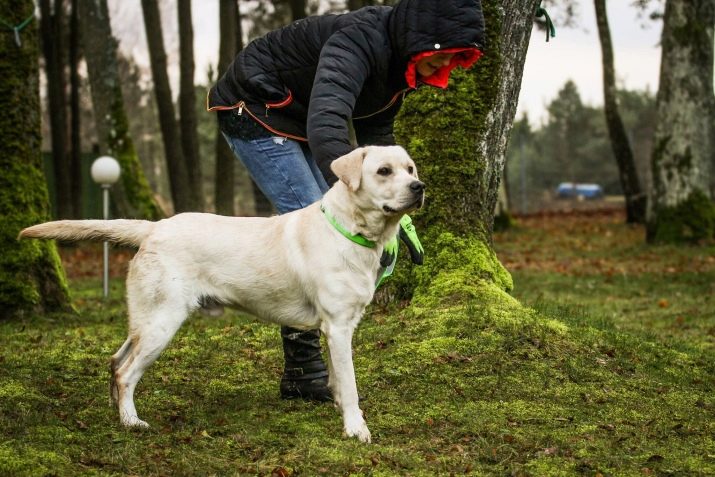
At what age to start educating?
The Labrador is a very active and playful dog, therefore it is impossible to raise it without any training, otherwise living together will bring more discomfort than pleasant moments. To train the dog, you can take him to specialized dog training centers, where experienced instructors will carry out the work. But this option is not for everyone. Professionals are needed only if there is a need to train the Labrador in some specific functions, or if the owner himself cannot cope with his pet.

You can train a dog at home, for which it is enough to read specialized literature on the topic, watch the corresponding video tutorials and decide what exactly the dog will study. The optimal time to start training is considered to be 2 or 3 months of age., when the dog is already quite independent, leaves the parental care or shows increased activity.
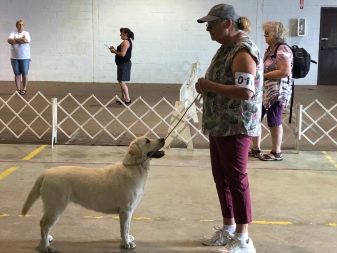
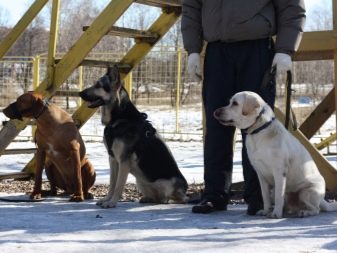
In the event that a Labrador is bought, and not born in the owner's house, then its training must begin from the very first day of appearance in the new monastery.
It is very important to immediately come up with a name for your pet and use it constantly so that the dog quickly gets used to it. It is not worth giving a lot of tasks and commands at once, it is enough to master 2-3 tasks and improve them.
The best parenting is between 3 and 6 months of age.when the dog is at a stage of development that allows you to quickly perceive a large flow of information and memorize it. In order for the training to be successful, it is necessary not only to know what needs to be given to the dog, but also the methods of influence in order to quickly achieve results without injuring your pet.


Parenting methods
In order to independently and correctly raise a Labrador, you need to know the basic rules of training, which are as follows:
- you can not beat the puppy, this generates retaliatory violence;
- you should not use devices for punishment: strict collars, a shocker or a stranglehold;
- it is worth taking into account the natural instincts of your pet;
- to quickly and permanently consolidate the knowledge gained, it is necessary to encourage the success of the pet with treats.
Raising a dog is not easy, especially when it comes to a Labrador retriever.

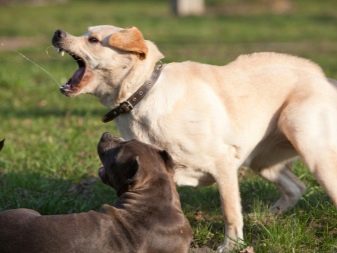
For the process to go well, it is worth consulting with a dog handler to determine the correct strategy for working with a dog. It is very important to make it clear to the dog that it has an owner - a person whom it must listen to and obey. To implement this plan you need:
- name the Labrador and let him get used to the nickname;
- try to be in full view of the puppy all the time in the first months of his life in a new home;
- play with the puppy, socialize, take care as much as possible.
The first walks should be carried out without a leash, for example, in the courtyard of a private house, where the dog will definitely not run away and not get hurt.

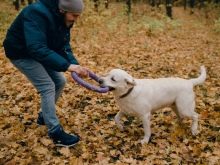
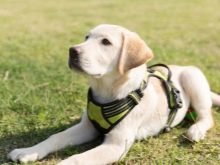
The work must be carried out purposefully, choosing the tactics of rewards for correctly executed commands. As soon as the puppy turns 2 months old, it is necessary to teach him the basic commands:
- "To me";
- "A place";
- "Voice / quiet";
- "Ugh";
- "Sit";
- "Lie".
In order for the Labrador to memorize knowledge, it is necessary to present it in small portions. The first lessons should last 10-15 minutes, and as soon as the dog begins to memorize commands and respond to them without being distracted, you can gradually increase the load.The optimal time period to strive for in terms of training is one hour, during which the dog must be collected and concentrated, carrying out old commands and learning new ones.
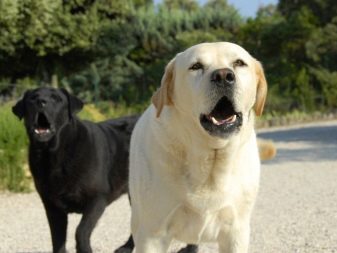

In order for a Labrador to work actively and try to earn a treat, it is necessary to train it before eating, keeping the feeling of hunger.
It is very important to treat your pet only when he deserves it, without giving anything in advance in order to stimulate high-quality and serious work. Your first training sessions should be in a quiet, secluded area free of distractions.
A trained dog will be able to carry out any command of the owner, even in a very noisy place.
The training process must be built in such a way that the Labrador performs a certain set of commands, and end the lesson with what is already confidently and well done, for which to give out a reward. Another important point is the "Walk" command, which should sound after each lesson, so that the pet knows that for a good job he will receive a treat and the opportunity to frolic as much as he can.
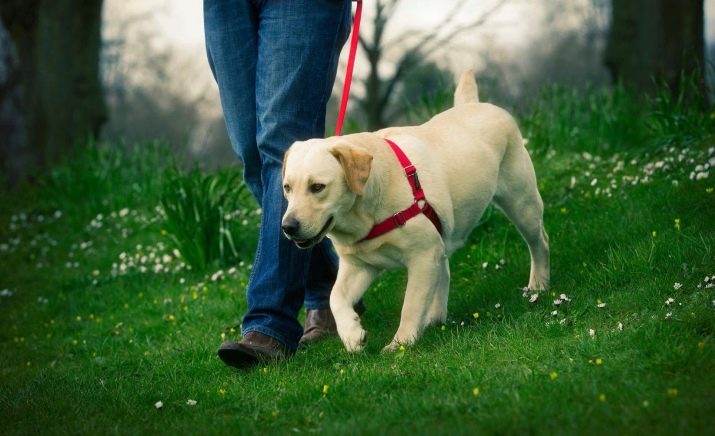
Toilet training
Dogs living at home should be able to go to the toilet in clearly marked places, and in older age, on the street. This procedure begins with the fact that a tray or place with newspapers is equipped for the puppy, where he will have to defecate. Most often, this process occurs after eating, therefore it is necessary to carefully monitor the dog, and as soon as it is in the position for walking to the toilet, you need to transfer it to the designated place.
After several such transfers, the dog will grasp the connection between the place and the process.
So that the Labrador eagerly goes into the tray, and does not mess around in the corners of the apartment, he needs to be encouraged, praised and stroked after every successful toilet trip. The same principle works for a walk. It is necessary to explain that the dog can empty himself outside the house, and this will be correct. Through praise and approval, the dog will know that he is doing the right thing. Gradually it is worth weaning the puppy from going to the toilet at home, teaching patience and waiting for a walk, and, as these activities are successful, praise your pet.
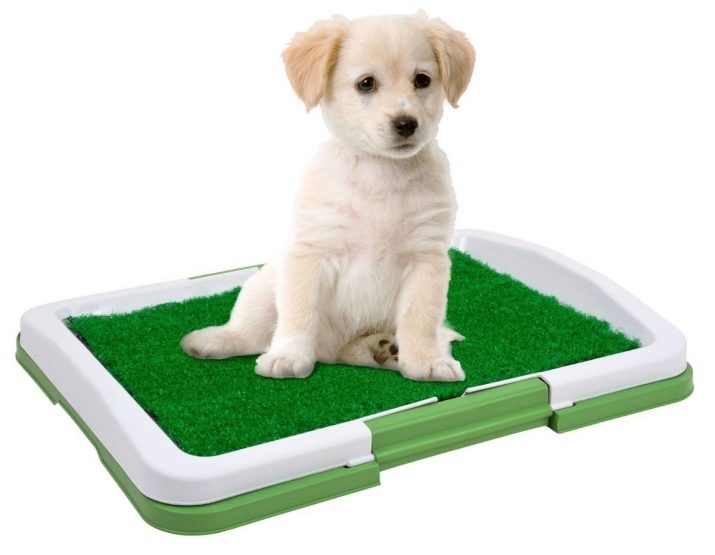
Collar and leash
Walking around town with a dog requires a collar, but the training procedure must be correct. It is worth choosing a new accessory for your pet, introducing it and putting it on. To prevent the dog from trying to take it off, it is worth distracting it with a favorite toy or treats. Initially, you need to put on a new product for a short period of time, gradually increasing the duration of the wear.

If the dog does not seek to pull off the collar, he should be praised and rewarded for this with something tasty.
Once the Labrador is used to the collar, add a leash to it. Initially, it is better to attach it to the collar and let the dog run around with it on its own. In order for the dog to get used to walking next to the owner, it is worth walking next to the dog, but not holding it. The next step is a little control and direction of the pet without pulling on the leash, so as not to hinder the movement of the dog. Once the Labrador is accustomed to being close to the owner and responds calmly to a leash with a collar, the training process can be considered successful.
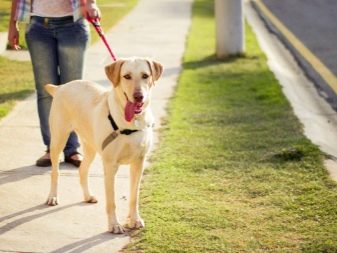

Behavior on the street
To walk on the street was safe for the life and health of the pet, it is necessary to teach him the basic rules of behavior, which include:
- a restrained reaction to the appearance of familiar people, the dog should not rush at them, even if it does not pose any threat;
- a ban on contact with strangers, so that someone else does not take your dog;
- a ban on eating food from the hands of a stranger, because it can be harmful to the dog, or even completely poisoned;
- a ban on picking food of any origin from the earth.
If you don't teach your dog these basics, it can get sick or fall prey to dog catchers.
The dog should perform any actions only at the command of the owner: meet acquaintances, eat food, take any other actions.
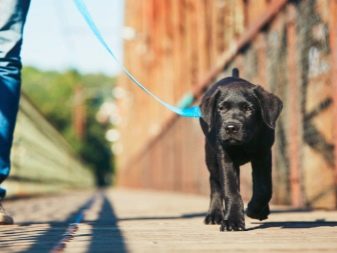
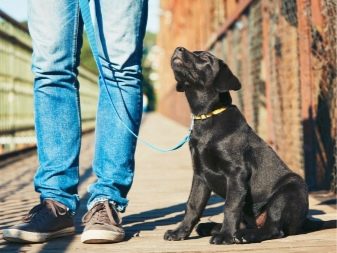
Teaching teams
The training course for basic teams is very important, and it must be carried out according to certain rules:
- a clear sequence of actions is needed, which allows the dog to quickly understand what is wanted from it;
- it is important that there are certain commands that the dog should do;
- it is necessary to articulate each command loudly and clearly.
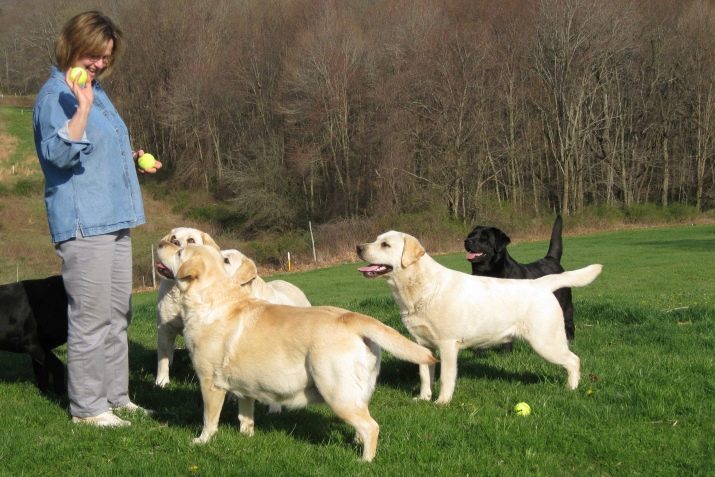
The command "To me" should be the first to learn, for which the algorithm looks like this:
- the owner prepares a delicacy;
- calls the dog by name with the addition of a command;
- stretches out his hand in front of him and waits
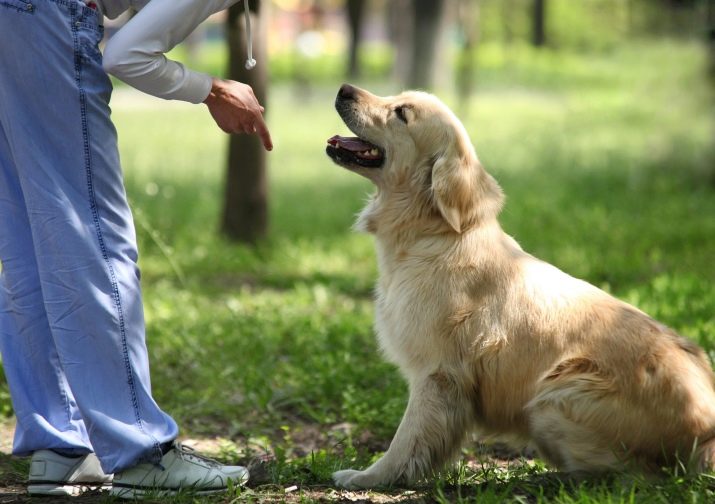
Once the dog learns to respond quickly to words and to execute the command quickly and clearly, you can try to do the same actions, but without encouragement.
Throughout the entire learning process, it is worth reinforcing the material covered, treating for what turns out well. The next important command is "Place", because the dog living in the room must be in a clearly defined place. The learning process looks like this:
- pick up a rug or pillow for the pet, where it will be in the room, and tell the puppy that this is "Place";
- during sleep, carry the animal there and after waking up, praise the pet and treat it for being in its place;
- during wakefulness, training takes place through a voice command and expectation of the result, at first you will need to independently transfer the puppy to the agreed place, and later he will understand himself what he needs to do.

The next command to be learned is "Fu", which is taught in this way:
- put a treat in front of the puppy;
- as soon as the dog wants to take it, say "Fu" and gently slap a newspaper or something similar on the dog's face;
- after several such trainings the puppy realizes that after the command "Fu" it is impossible to take food.

Training in the "Sit" command is also important, which is carried out in this way:
- the owner stands near the dog;
- pronounces the command "Sit" and with one hand supports the chest, and the second lowers the puppy's pelvis down;
- This exercise is repeated until the puppy remembers it, and after each successful repetition, you must definitely reward the dog with a treat.

Next comes the training to the command "Lie down", for which you need:
- fix the puppy in a standing or sitting position;
- give the command "Lie down", holding the delicacy in your hand;
- press down a little with your palm on the dog's back so that he lies down, while holding the treat in front of the dog's face;
- if the dog lies down and does not get up, give the treat.
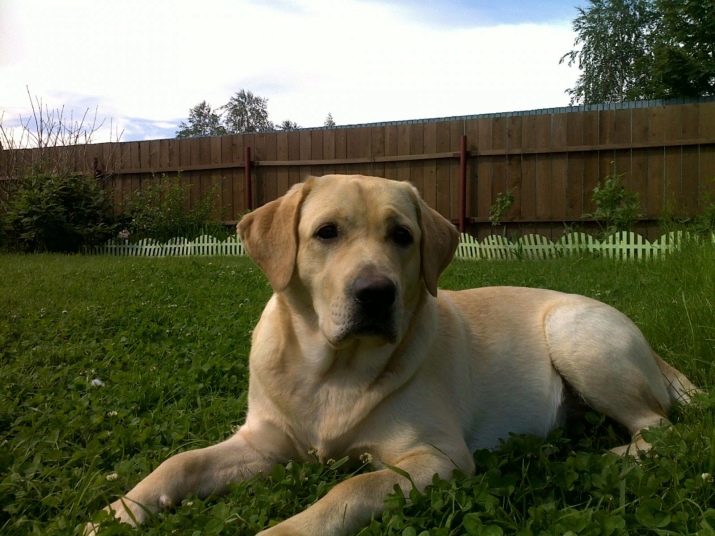
The training process must be continued until the dog has fully mastered all the commands and will not execute them flawlessly.
Possible problems
For the training process to be successful, it is important to avoid common mistakes, including:
- the use of physical force and punishment to puppies, which completely discourages the fulfillment of the requirements and contributes to the manifestation of aggression in an adult in relation to people;
- using the method of training adult dogs, if you have a puppy in front of you (each method is developed taking into account the breed of the dog, its age and characteristics of character and development);
- variation of terminology, if the command "To me" was learned, you cannot use any other interpretations, because this will negate all the efforts of the training;
- pranks should not be allowed to the puppy, which will be punished in the future, the dog must understand from an early age what is allowed and what is not;
- you should not educate a Labrador those qualities that are unusual for him, for example, the skills of a watchdog;
- no need to give the puppy too much stress - both mental and physical, all activities should be within the power of the dog.
Following the rules of training, being kind to your pet, patience and the desire to raise a good friend and a polite dog will be rewarded very soon.


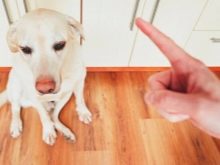
See below for the features of training and education of the Labrador Retriever.






































